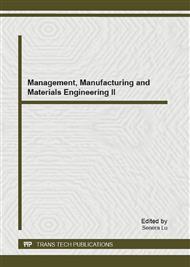p.570
p.576
p.584
p.593
p.599
p.606
p.611
p.618
p.626
Mould Risk Assessment Based on RST-BN Approach
Abstract:
Mould industry is crucial to all manufacturing fields, but there has been very little research work of mould project risk assessment in the world so far, it doesn’t match with mould’s important role in all industries. Mould project risks often became issues, made over 8% rework rate after mould delivery and 20% process rework rate in average. This paper summarized the disadvantage of FTA-BN approach to quantitative risk assessment of mould project, which is widely used in other industry fields, and proposed RST-BN approach instead, The attribute selection and fault diagnosis was developed based on the advantage of rough set theory (RST), to deal with the incomplete, vague and ambivalent data by the innovation algorithms of Core reduction and Unred reduction of attributes. The rough set approach enables one to discover the minimal subsets of condition attributes associated with risk events of mould project, to make BN modeling simpler and effective for quantitative risk assessment. Through a case study, our research result shows that the RST-BN is a promising approach for quantitative risk assessment of mould project development for mould-maker to rank risks and make mitigation plan in advance.
Info:
Periodical:
Pages:
611-617
Citation:
Online since:
December 2012
Authors:
Price:
Сopyright:
© 2013 Trans Tech Publications Ltd. All Rights Reserved
Share:
Citation:


